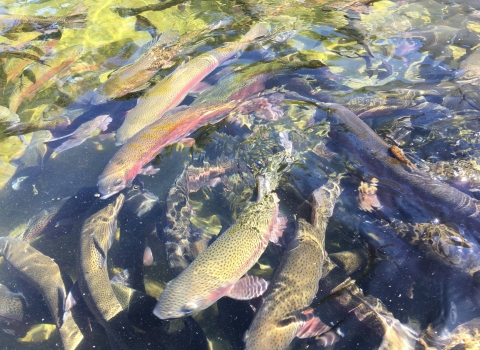Hudson River trustees support EPA stand on dredging river
Trustees for the Hudson River dredging project today announced their support for the Environmental Protection Agency's (EPA) plans to remove PCBs (polychlorinated biphenyls) from the river. The overall environmental benefits of the dredging greatly outweigh any short-term PCB impacts of the work, they said. The announcement came in the wake of several days of presentations by EPA and General Electric Company before a panel of dredging experts reviewing Phase I of the project, completed last year. The panel will offer recommendations and propose changes that could be incorporated into the second phase of the project, set to begin in 2011. The natural resources trustees for the Hudson River dredging project are the: New York State Department of Environmental Conservation (DEC). U.S. Department of the Interior, represented by the U.S. Fish and Wildlife Service (USFWS). U.S. Department of Commerce, represented by the National Oceanic and Atmospheric Administration (NOAA). The trustees' role is to perform an assessment of injuries to natural resources resulting from the release of PCBs into the river by GE. DEC also supports EPA with technical advice and oversight for the project. Although the Phase I dredging stirred up PCBs in the river and raised the PCB level in fish near the work, the trustees had expected these short-term effects from the dredging. Similar short-term effects have occurred during past dredging in the river. PCB levels in the river and in fish decreased downstream from the dredging work, with no significant increase found farther downstream in the lower Hudson River. PCB levels in the water and the fish adjacent to the Phase I work will decrease within a few years. The trustees expect a similar result after the entire dredging project is completed. Overall levels will be lower because a large amount of PCBs will have been permanently removed from the river. "Over the next several years, we have a unique opportunity to permanently remove significant amounts of PCB contamination from the Hudson River for the benefit of future generations of New Yorkers," said DEC Commissioner Pete Grannis. "A comprehensive remedial dredging project is an integral step in the restoration of this iconic river, and we fully support EPA in its efforts to get the job done right." "We disagree with many of the conclusions presented by GE in the peer review process," said Northeast Regional Director Marvin Moriarty of the U.S. Fish and Wildlife Service. "We agree with EPA that the overall environmental benefits of the dredging greatly outweigh any short-term impacts associated with the work." "Restoration of the Hudson River begins with a robust cleanup" said Dr. Robert Haddad, Chief of NOAA's Assessment and Restoration Division. "GE's proposal will further delay the recovery and restoration of this nationally historic river, which has been contaminated since the 1940s." Highlights: The trustees also expressed their position on the following issues: Productivity Standard The trustees believe it is important to focus on project quality, even if this means the project takes longer. Depth of Contamination PCBs extend deeper into the riverbed than originally believed. The trustees believe that capping sediment is not an acceptable solution. Capping has potential long-term consequences, including risk of cap failure. Containing PCB Oil The trustees believe that PCB oil on the river surface during Phase I was a major contributor to PCB release into the river. They recommend containing and collecting PCB oil to reduce the short-term effects from dredging. Navigation/access Dredging The trustees support dredging in shallow areas, allowing barges better access to dredge areas. Increasing the amount of sediment on barges will improve productivity and reduce re-suspending contaminated sediments. Media: For a copy of the trustees' comments, contact the DEC press office at 518-402-8000.


